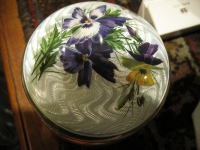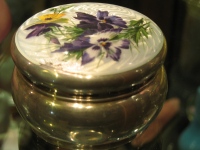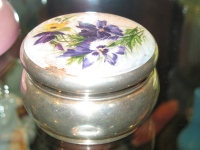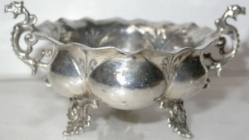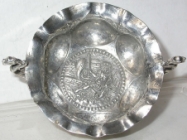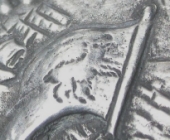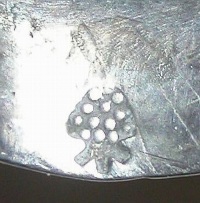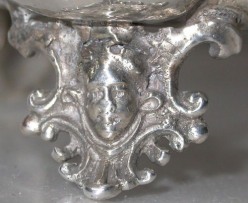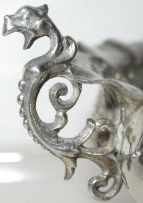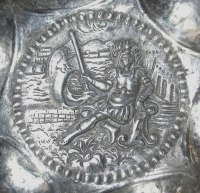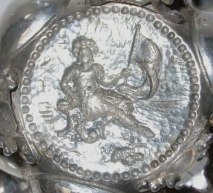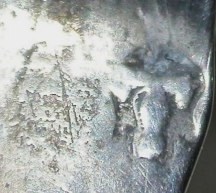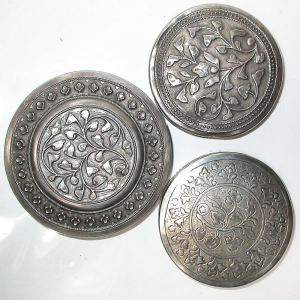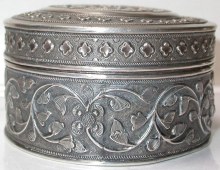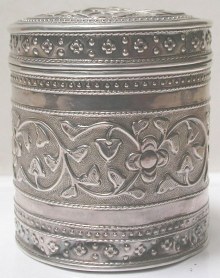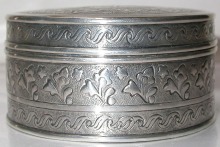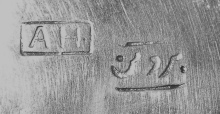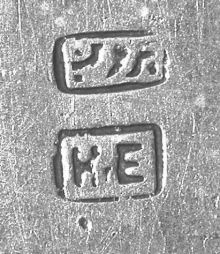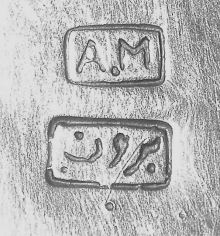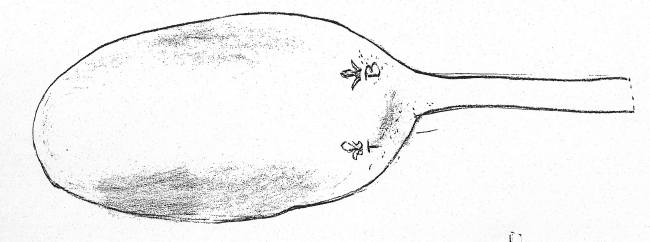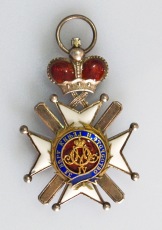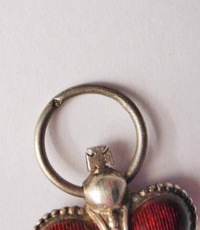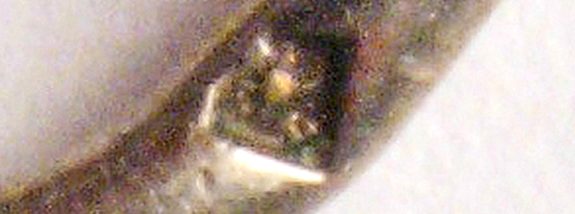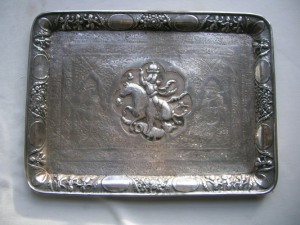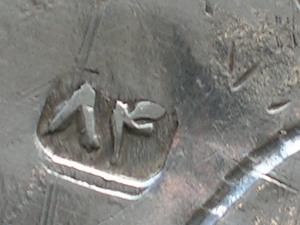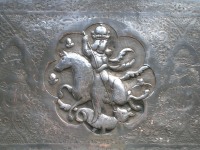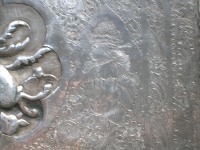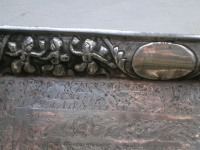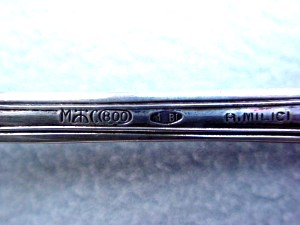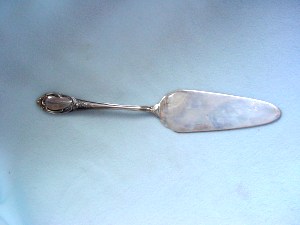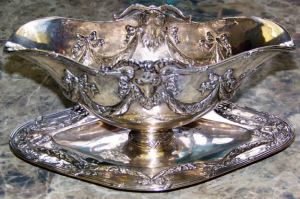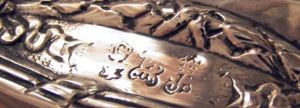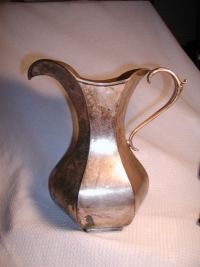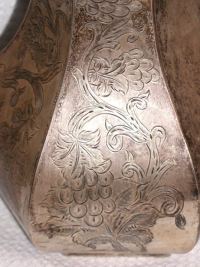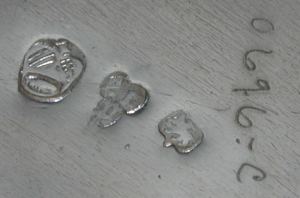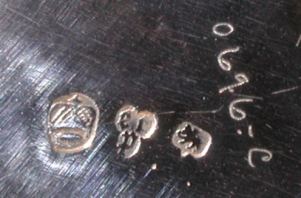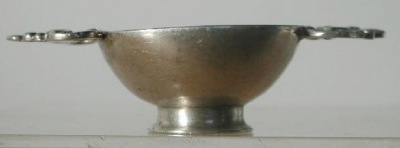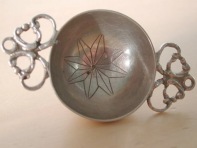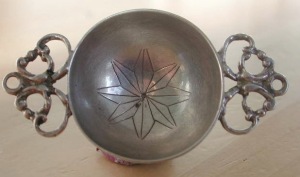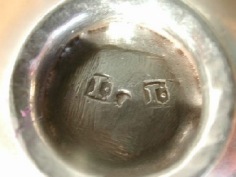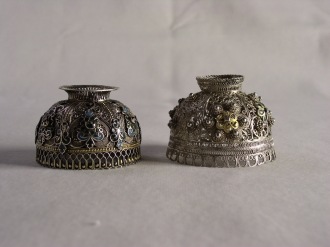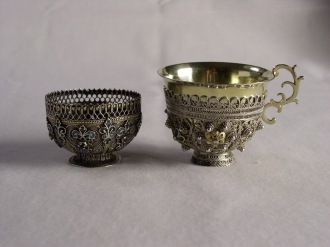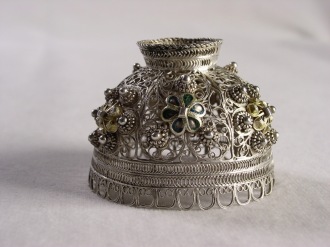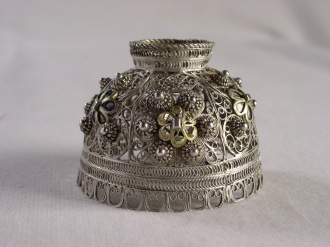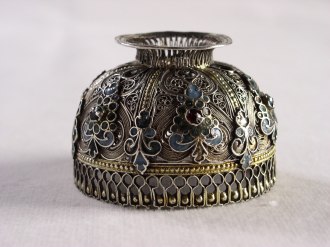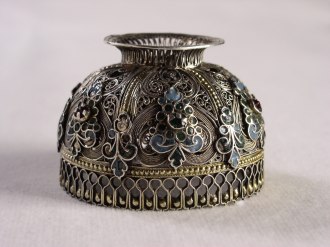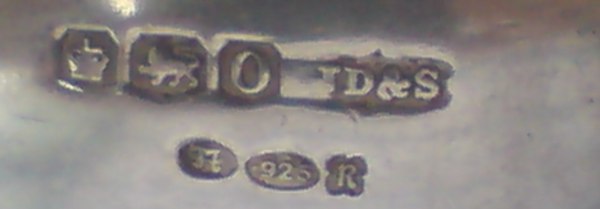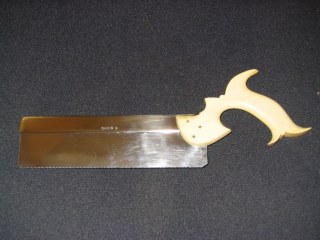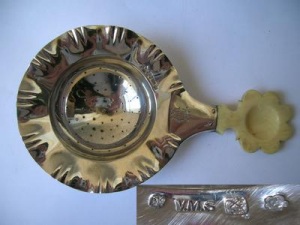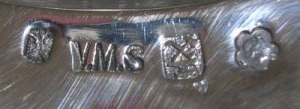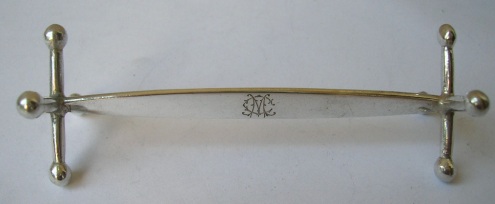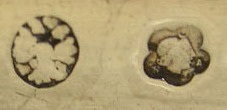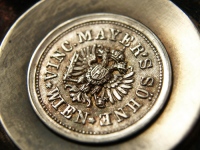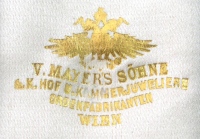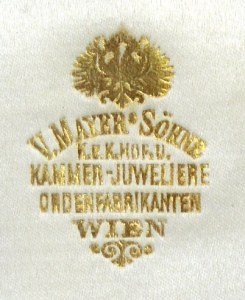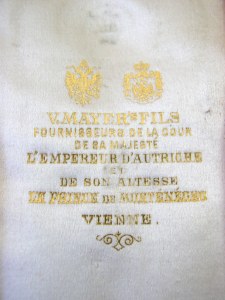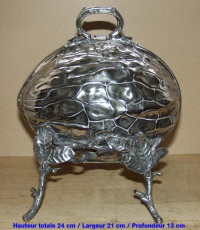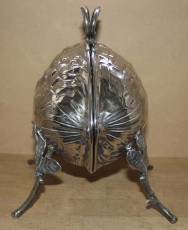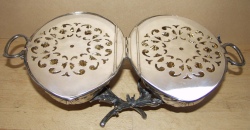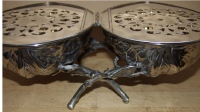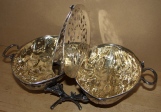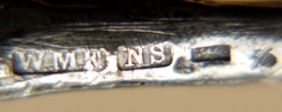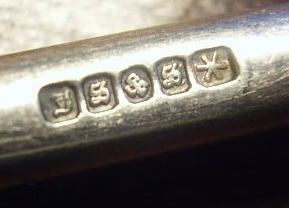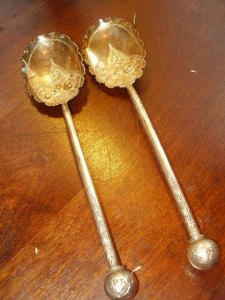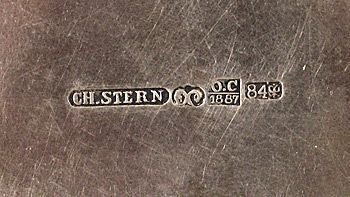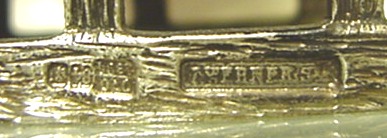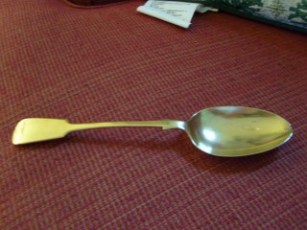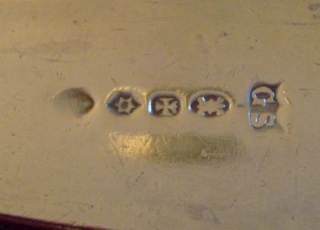 newsletter # 35 - March 2007
newsletter # 35 - March 2007www.ASCASonline.org
email: silverassociation@yahoo.it
YOUR GUIDE TO THE MARCH NEWSLETTER:
articles new members
members' window
|
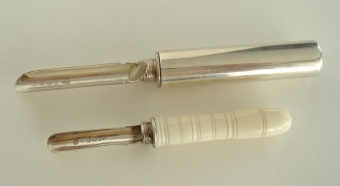 Dororhea Burstyn presents:
Dororhea Burstyn presents:Eating apples, the elegant way Most apple corers were made from turned wood, bone or ivory. The silver apple corer is a rarity. Only the affluent could afford to have kitchenware made of silver. Oblivious of the concept of bacteria, the germ-fighting properties of silver were known since ancient times ... click here |
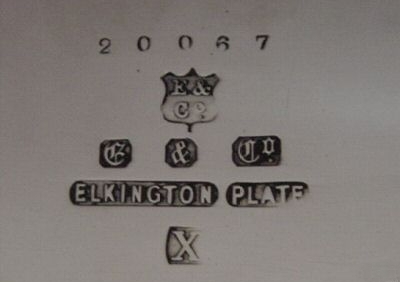 Giorgio Busetto presents:
Giorgio Busetto presents:Elkington Electroplate Silver /Silver Plate: Marks and Date Letters A widely illustrated study of Elkington electroplate silver marks and date letters. Elkington & Co. are one of the most important names in English silver and certainly the most important in silver plate. They began life in Birmingham as a company of silversmiths in 1836, and experimented with improving gilding techniques. By 1838 they had discovered and patented a new way to electroplate one metal on to the surface of another. By 1840 production was already underway with silver electroplated wares. The company received financial backing from Josiah Mason in 1842 ... click here |
New members
Welcome to new ASCAS members:
Maureen Dunn - USA
Adrian Fitch - USA
Mario Galasso - Italy
Christophe Ginter - France
Kristin Hardy - USA
Stanley Hindle - Wales UK
Stephen Kerzner - USA
Kathi Jablonsky - USA
Linda Junee - Australia
Robert Massart - Belgium
Harry Morse - USA
Dianne Picket - Australia
Gail Roland - USA
Brienne - Superczynski - USA
Dean Tinkler - USA
Ian Troughton - England UK
Ron Waddling - Canada
Jonatham Weston - England UK
Members' Window # 35
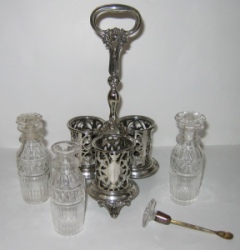
Giovanni Ciceri presents: |
Mail to ASCAS: e-mail
silverassociation@yahoo.it
Your fine enamelled jar was made in Birmingham in 1905
but I do not know the name of the maker. I've published your photos and I
hope that ASCAS members will be able to identify the
silversmith.
Best regards
Giorgio Busetto
Fredric Sinfield writes:
...I'm seeking information about a small dish. It is 80x40mm,
weighs 68.5grams, has three feet with masks and beasts for the
two handles.
The story is that whilst on holidays in another city nothing of
interest was spotted having done the rounds of the stores until
a visit to an antique furniture shop.
Expected not to find anything but in a cabinet was the small
bowl, it was so dirt encrusted no marks could be seen so it was
a speculative purchase on the hunch it was an old piece of
silver.
The town mark appears to Augsburg.
Can any member confirm this and identify the maker's mark?
Not sure if it's upside down in the photo.
Also, the significance of the seated knight in the centre of the
dish with a banner featuring bear?
Any clues will be appreciated.
Thanks,
Fred
Fredric Sinfield writes:
... The Arabic reads as Bron, the only place of that name I
can trace is in Ghana. This might explain why floriated designs
were chosen in keeping with Islamic decorative practises.
The Europeans were there so it is possible they purchased silver
items from the local makers.
I can find no reference to any silversmiths or marks from that
region, maybe a reader knows about these pieces which appear to
be ladies dressing table accoutrements.
below are the lids showing the designs.
Fig 1 is 90x50mm, weighs 128grams.
Fig 2 is 75x85mm, weighs 82grams.
Fig 3 is 75x40mm, weighs 78grams.
Marks are illustrated on the second row
Any ideas or suggestions?
Regards,
Fred.
Nicolas
Ciarlo writes:
I’m student of Archaeology in Argentina and I’ve been analyzing with metallographic
and chemical techniques many spoons from a British shipwreck lost off Patagonia in 1770.
One of them was made of silver and I saw a pair of unexpected
diffuse marks on the back side of the bowl.
As you can see in the picture (without scale, the stem is broken)
I’m sending you, both letters are separated. The left one is a
"T" under a figure that looks like "fleur-de-lis" and the other
one is a "B" also under a "fleur-de-lis".
I think those marks are the maker’s ones. And I thought that
they were British marks, but a specialist in British ones told
me that would be French. I have no written information about the
French silver marks and their makers in 18th century.
I really appreciate if you could help me with the source of the
complete name of the maker and any information of him, like
where the company was located, how long it remained in
use, etc.
Finally, why the letters were stamped on the bowl and not on the
stem?
Thank you in advance
Best regards
Nicolas
Tomislav Muhic writes:
I have problem with one hallmark found on the Takowo cross,
made in period of 1876 till 1878. Usually production of this order
was by many Viennese markers, but this piece doesn't match to
any of their models.
The crosses of that particular model were awarded in the
beginning of the war with Turkey in summer 1876. In that period
Austria was strongly against changing the political conditions
on the Balkans, mostly because of its interests in Bosnia (later
occupied and annexed), so it is almost totally impossible that
this order was made in Vienna.
In that time only Russia was supporting Serbia, but unofficially,
over the "Slovenian comity". Serbia has terrible loses in that
war, what also wasn't of interest to West and Russia, so they
started with support in late autumn of 1876. Austria ultimate
his help with comfirming its interest in Bosnia by Serbian side,
and started to send aid in November of 1876.
My problem is who could possibly make these orders in the summer
of 1876. This hallmark is my only lead. The hallmark is rhomboid
shape, with letter L on the bottom, and the siluette of the frog
(this may be not correct, but is my only information) in the
middle.
I'm sending you some pictures. Sorry but I don't have any better,
I got this by Serbian collector from Switzerland.
I hope that maybe you can help me.
Best regards,
Tomislav Muhic
Lanfranco Bruschini
writes:
these are the images of a silver tray marked with "84" (in
Arabic). It has an elaborate embossed rim with figures and
another central figure on horse. I believe that "84" refers to
purity degree in zolotnicki (system used, beside Russia, also in
Iran).
Dimension: 37X25 cms , weight 660 gr.
I'm looking for information about its origin and age.
Thank you for your help.
Lanfranco Bruschini
Fredric Sinfield
offers a slightly humorous story related to " Memento mori"
piece presented in
January Newsletter
Further to the Memento Mori article.
There is a slightly humorous story concerning a box for auction
on a Sunday with preview the day prior, so there was no chance
to obtain a translation so it was purchased as a speculate piece
as the marks were recognised.
It was not until a visit to the Swedish Consulate revealed it
was an in memoriam or a "Memento mori" piece as the inscription
translated as in memory of S. Rosholm from the Christiania Sick
and Funeral Fund and dated 1/9/1905.
To whom the Fund presented the box and why is unknown but it may
have been to satisfy a bequest by S. Rosholm.
The box has the State assay mark, the crowned C for
Christianstad and C7, the date mark for 1905.
The maker of the 72.5 grams box was Bernt Erlandsson, active from
1867 and who employed up to 32 workers in the workshop of which
parts date from the sixteenth century.
Many of his employees immigrated to the Americas in the early
1900 and in 1917 Erlandsson incorporation his manufactory and
changed his punches.
When he died in 1926, Johan Olof Grönroos purchased the
business.
Debbi Cracovia writes:
I have this cake server that I believe to be from Italy. I
wanted to know who the maker is and about when it was made.
Thank you
Debbi Cracovia
Your item was made by Clementi Fabbrica Argenteria. More
information is available in my private website at
www.silvercollection.it
Giorgio
Darlyn Wummer writes:
I'm trying to find information about the origin and age of my
gravy boat with rams head.
Thanks for looking
Darlyn Wummer
Juli Price writes:
I'm wondering if you can help me identify this pitcher. I
can't seem to find any info on it. I know that Sheffield uses a
crown mark, but it appears to be different than the one stamped
on this item. Also, the symbol in the center is a little
difficult to capture well in a photo, but the letters are..."e",
"c", and "p" underneath them.
Any help you can give me would be greatly appreciated. Thanks so
much.
Sincerely,
Juli
Kari Helenius writes:
...Here is something for which I hope to get an answer from
the fellow members.
I have got two filigree silver cup "covers", which I believe are
called zarfs. The diameters at the top are 57 / 55 mm or 2 1/4"
/ 2 1/8". The heights are 42 / 38 mm or 1 11/16" / 1 1/2 ".
I attach a few pictures. I am interested to know where do these
originate, what has been the use, and what is the age.
The zarf # 1 has got a (later made) inner silver cup with a
handle (charka) with Moscow marks of 1791. The inner cup also
has a screw in the bottom. The Zarf itself has no marks and it
is fastened to the cup´s screw with a nut.
The Zarf # 2 is just as it is with no additions. Also no marks.
Also this cup is six-fold and there is a bunch of grapes of
enamel-work in each section with a colored stone in the middle.
I hope that somebody can give me some idea where these come
from.
Best regards
Kari
Tony Phillips writes:
...Can anyone help me. I have six spoons carrying the
hallmark in the attachment. I know the English hallmark is :-SHEFFIELD
1931/2 and the maker is:-James Dixon and Sons.
I think the one underneath is the import mark but cannot seem to
trace it exactly, does anyone know the mark and if possible the
date,
Kind Regards
Anthony
Replies to questions
| Janet Rose and
Kathy Lattin receive these replies about their small
open handled backsaw
( see February Newsletter) Leslie Gray writes: I would hazard a guess that the saw in question is a
surgical saw used in amputations. Rather gruesome and
not my cup of tea but is certainly "collectable". The
"EP" amongst the marks must surely refer to electro
plate. Sorry I cannot help with the remaining marks, but
perhaps other members can.
James Baldwin writes:
|
| Lucia Costa
Velosa receives this reply about the marks on her pieces
( see December 2005 Newsletter) Tomislav Muhic writes: The pieces that Mrs Velosa have are made in Vienna,
and probably exported to Russia. Beside silver marks,
there is also the mark VMS. This is the hallmark of well
known Viennese producers Vincent Mayer's Sohne. They
were also using mark VM.
|
| Gino Gatta
receives this replies about his WMF item
( see February Newsletter) Ellen Fuerst writes: In response to Gino Gatta's question, the item is a
biscuit box. Biscuit boxes usually date to the Victorian
Era (late nineteenth century). Often the boxes are in
the shape of shells and some actually contain 3
compartments instead of the more typical two.
|
| Victoria and
Larry Sherlaw receive this replies about the mark of
their spoon
( see February Newsletter) Wayne Bednersh writes: These two spoons were made in the Orient (probably
China) and the marks are an imitation of the British
hallmarking system. The spoons were probably made in the
1870-1885 time period. The quality of the silver is
probably around the sterling standard
|
| Dariusz
Malinowski receive these replies about the mark of his
sugar bowl
( see February Newsletter) Charles Cage writes: Regarding the two Russian items in this month's
newsletter, technically they are both Polish, from
Warsaw, which was under Russian jurisdiction from 1850
to 1915. Both Dariusz Malinowski's sugar bowl and Ruth
Kusiowski's sleigh sculpture have the Imperial eagle and
the city mark for Warsaw and the Cyrillic assayer's mark
of Josef Sosnkowski, working in Warsaw 1852-1853 and
again 1860-1896 (though he used this mark only
1869-1896.) The maker of Dariusz Malinowski's sugar
bowl, Ch. Stern is not listed in any reference that I
have, though he may be related to the M. L. Stern
working in Warsaw in the 1870s. The maker (though not
necessarily the designer) of Ruth Kusiowski's sleigh
sculpture is T.Werner, for Teoder Werner & S.,
successors to Karol Malcz and working in Warsaw in the
last quarter of the 19th century.
|
| Ruth Kusiowski
receives these replies about the mark of her sculpture
( see February Newsletter) see replies of Charles Cage and Adam Goldsmith for Dariusz Malinowski's question
|
| Wes Fultz
receives this reply about the mark of his spoon
( see February Newsletter) Wayne Bednersh writes: This is a very common gold plated spoon. The marks
are bogus
|
"A PAGE per MONTH"
In this column we present a page (one
page only) obtained from makers' brochures, books, auction
catalogs or whatever other printed paper, which may be of
particular interest for ASCAS members.
The images will be published at a "low resolution" level and for
private and personal use only
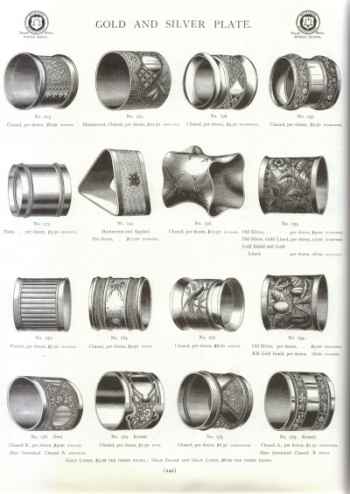
|
This month
ASCAS presents a page of napkin rings from the The
Meriden Britannia Co 1886/7 catalog (image supplied
by Terence Hodgen)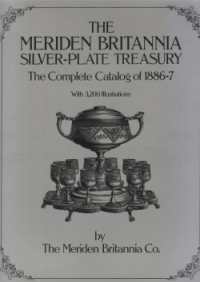
|
"A WORD per MONTH"
In this column we presents an abstract
from a page of the "What is? Silver Dictionary"
courtesy of
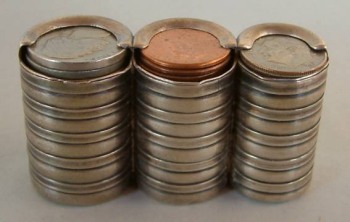
|
COIN HOLDER
silver coin holder is a container of cylindrical
form used to hold a pile of coins of identical size.
Some Russian examples consist of three containers,
placed side by side, suitable to hold three pile of
coins of different size. An interior spring propelled
the stack to the top of the container for an easier
removal of the uppermost coin. |
Closing our MARCH 2007 edition of ASCAS Newsletter I hope you have appreciated its content.
Your comments, suggestions and advice will be of great help.
My thanks to James Baldwin (England UK), Wayne Bednersh (USA), Lanfranco Bruschini (Italy), Dorothea Burstyn (Canada), Charles Cage (USA), Nicolas Ciarlo (Argentina), Giovanni Ciceri (Italy), Debbi Cracovia (USA), Hymie Dinerstein (UK), Jayne Dye (USA), Ellen Fuerst (USA), Hamid Ghanbarezade (Iran), Adam Goldsmith (South Africa), Leslie Gray (England UK), Kari Helenius (Finland), Terence Hodgen (Australia), Tomislav Muhic (Croatia), Tony Phillips (England UK), Lloyd Prator (USA), Juli Price , Fredric Sinfield (Australia), Darlyn Wummer (USA) for their invaluable contributions.
Giorgio Busetto
Secretary
ASCAS is a community of people having a common
interest in antique silver.
|

